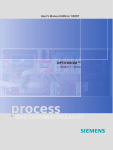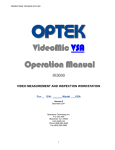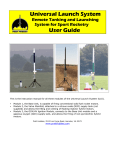Download EXO User Manual 603789 Rev A
Transcript
pH and pH/ORP Sensors 6.14 Sensor Module Replacement EXO pH and pH/ORP feature replaceable sensor modules due to the electrolyte depleting characteristics necessary to make such measurements. We recommend that users replace these modules as necessary, typically one to two years if stored properly in the provided storage solution when not in use. Working life will depend on the conditions of the deployment environment. Perform this procedure in a clean, dry laboratory environment. 1 Remove old sticker and plug. A Peel off and discard the old sticker that covers the junction of the sensor body and the module. Then, with a small, flat-blade screwdriver, remove the small rubber plug from the gap in the hard plastic ring at the base of the sensor module. Caution: Always exercise extra care when using sharp or potentially harmful instruments. 2 Remove and discard old sensor module. 2 1 1 To remove, perform two motions simultaneously. 1.With your fingers, squeeze the sensor module’s hard plastic ring so that it compresses the gap left by the rubber plug. 2.Steadily pull the sensor module straight back from the sensor body, rocking slightly if necessary. Note: The act of removing the old sensor module renders the o-rings on the module unusable. To prevent catastrophic leaks, do not attempt to reinstall a module with damaged o-rings. Discard the head according to your organization’s guidelines, or return it to manufacturer for recycling. 3 Inspect and service connector cavity. Inspect the connector cavity of the probe body for debris or moisture. If detected, remove it with a lint-free cloth or a gentle blast of compressed air. pg | 102 4 Inspect and service new sensor module’s o-rings. Ensure that the two o-rings are not nicked or torn and have no contaminants or particles on them. If the user detects damage, carefully replace them with the extras included in the sensor module kit. Then apply a thin coat of Krytox® lubricant to each o-ring. If a user removes a sensor module that is in good working order, replace the o-rings before use. 5 Insert new sensor module. Align the prongs on the base of the head with the slots in the sensor body. The sensor module is keyed to insert in only one orientation. Once the module is aligned, press it firmly into position until it clicks. Wipe away any excess grease from the assembled components. 6 Apply new sticker. Wrap the junction of the sensor module and the body with the new sticker included in the sensor module kit. This sticker helps keep the sensor module junction clean and retains the rubber plug throughout deployment. 7 Re-calibrate the sensor. Calibrate the pH or pH/ORP sensor following each sensor module replacement. After calibration, the sensor is ready for field use. pg | 103








